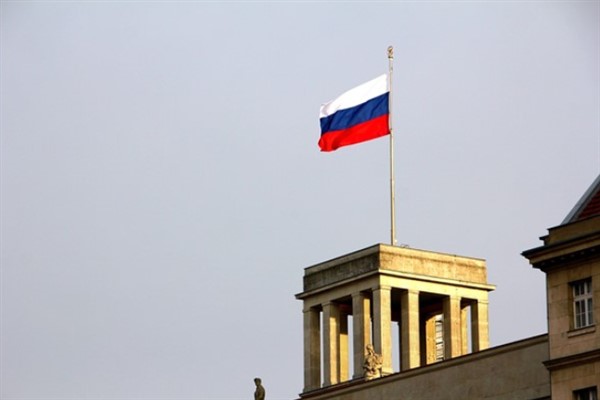What are PPI and CPI? What do they mean? Producer price index (PPI) is an index that measures the change in producer sales prices of total goods and services produced in a certain period of time. The consumer price index (CPI), on the other hand, shows the average changes in the prices of a particular group of products and services purchased by a normal consumer. CPI is the index that shows the change in final prices that concern the consumer in the price indicators used to measure the change in annual inflation value.
How are they calculated? WPI (Wholesale Goods Price Index) and PPI, which calculate the cost and price of the product before it reaches the market shelf. The increase in this index shows the reflection of the total cost of goods and services produced by the producer, in other words, the production costs. It can be considered as the main indicator of cost inflation and a leading indicator in terms of the final price of the products. PPI, CPI and other special comprehensive price indices are formed within a basket in which a certain group of goods and services are weighted, and the changes in index values according to the base year show us the headline and special comprehensive inflation rates.

Global CPI rates comparison… Source: Bloomberg
Pass-through... It is a phenomenon that can be expected to reflect the increases in the PPI to the CPI after a while. Therefore, the fact that the main components of cost inflation, affecting producer costs, also affect consumer prices is delayed and inevitable to a certain extent, although not with the same coefficient.
The approximation coefficients of PPI and CPI will vary cyclically or in a way that includes market/economy conditions, and application changes in the economic structure (such as price controls) may also affect the difference. Therefore, the CPI and PPI correlation is not the same in every country and in every period. Regarding the realizable dimensions of inflation, it is optimal to establish a policy control mechanism in terms of "welfare gain" and "price stability", whichever is higher in PPI and CPI. In particular, the fact that the PPI is high and the real factorial reasons for the difference should be analyzed and the diagnosis should be made. If PPI and CPI inflation diverge, optimal monetary policy should target PPI rather than CPI inflation, as the literature suggests. Transition takes place in different stages. That is, countries with high CPI are also countries with high PPI, but vice versa.
Policy guidance of central banks… In direct targeting, central banks should consider the real conditions of inflation in terms of monetary policy guidance and objectives. For example; Is the gap in price indicators between PPI and CPI dependent on temporary factors? Based on the problems in global supply chains, the difference between these two inflation indicators has emerged in many countries recently. The fact that the gap between PPI and CPI is continuous should be interpreted in a different dimension. Difference factors such as factoral density (labor intensive, capital intensive), innovation effect, steps in the production process, intermediate goods effect in the PPI basket should be considered between the PPI and CPI components. While the increased segmentation in the production process and the labor and capital cost added to the unit price of the good affect the final price of the good as inputs, it is observed that consumer preferences and the related demand are also involved in the final price formation.
In historical observation, global financial crisis periods (such as 2008) can cause pollution in the correlation, so it is seen that it is necessary to focus on periodic breakdowns rather than wide-time correlations. In the 1970s and early 1980s, high inflation rates were seen, which was caused by global supply problems and oil prices, which was also fed by political instability, and developed countries suffered. The tightening policies implemented and the easing of global supply reduced these inflation rates in the following years. Most developing countries that had high or hyperinflation in the 1970s or 1980s escaped very high inflation in the 1990s. However, except for periodic breaks, since the course in the CPI and PPI correlation depends on the factor density in the economic structure, it cannot be considered as a criterion for developed and developing countries alike.

Global PPI rates comparison… Source: Bloomberg
Exchange rate, input cost factor… Changes in the nominal exchange rate also vary according to the import intensity of intermediate goods and final goods in terms of the effect of PPI and CPI. The country's nominal exchange rate and import intensity take place in the sensitivity analysis to changes in global industrial input prices. The bilateral trade shares observed in intermediate goods are a factor in the realization of productivity shocks at every stage of production in every country. The observed increase in the segmentation of production after 2001 has been greatly facilitated by foreign trade and international trade, including the rise of China and Eastern Europe as a production and export platform. While directly observing the effect of industrial input prices in PPI; demand conditions in the market and economy, price elasticity and sustainability in profit margins cause time and rate changes in the spread within the CPI. For both final consumption goods and goods used as inputs (such as energy, intermediate goods, parts, components), the direct effect of price changes, and in addition to this, the overall spillover effect is calculated over the input cost it creates.
Conclusion? Due to the inability of production to respond to the rapidly increasing demand, the PPI-CPI difference in many countries is above the historical averages. Of course, the reflection coefficient of the PPI to the CPI is not 100% because the difference in the input basket, the difference in demand in different goods groups (durable consumer goods, non-durable goods distinction), input diversity, substitution and flexibility, technological development and growth and demand conditions in the economy are effective. In addition, the lagged effects of convergence may differ in periods of high growth and low growth, and the accumulation in PPI may be reflected earlier in high growth and later on consumer prices in slow growth. In the context of accelerating the growth path, it is possible to see the price reflections of domestic cost elements, especially exchange rates, in policy implementation. In particular, the PPI-CPI pass-through in foreign exchange and global commodity prices, which is reflected in import costs, may increase the loss effect in an interest rate policy that is not tight enough.
Kaynak Tera Yatırım-Enver Erkan
Hibya Haber Ajansı
























